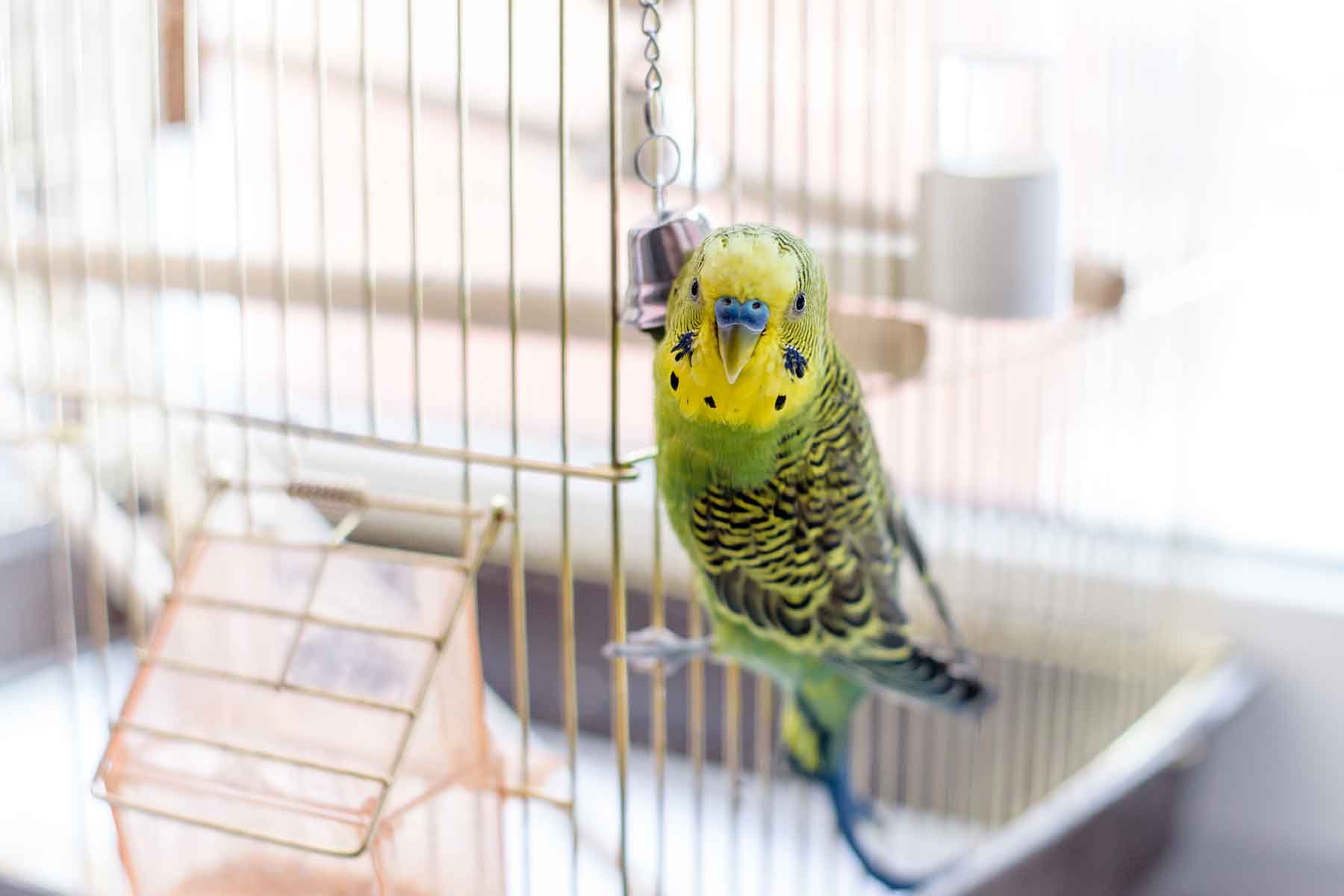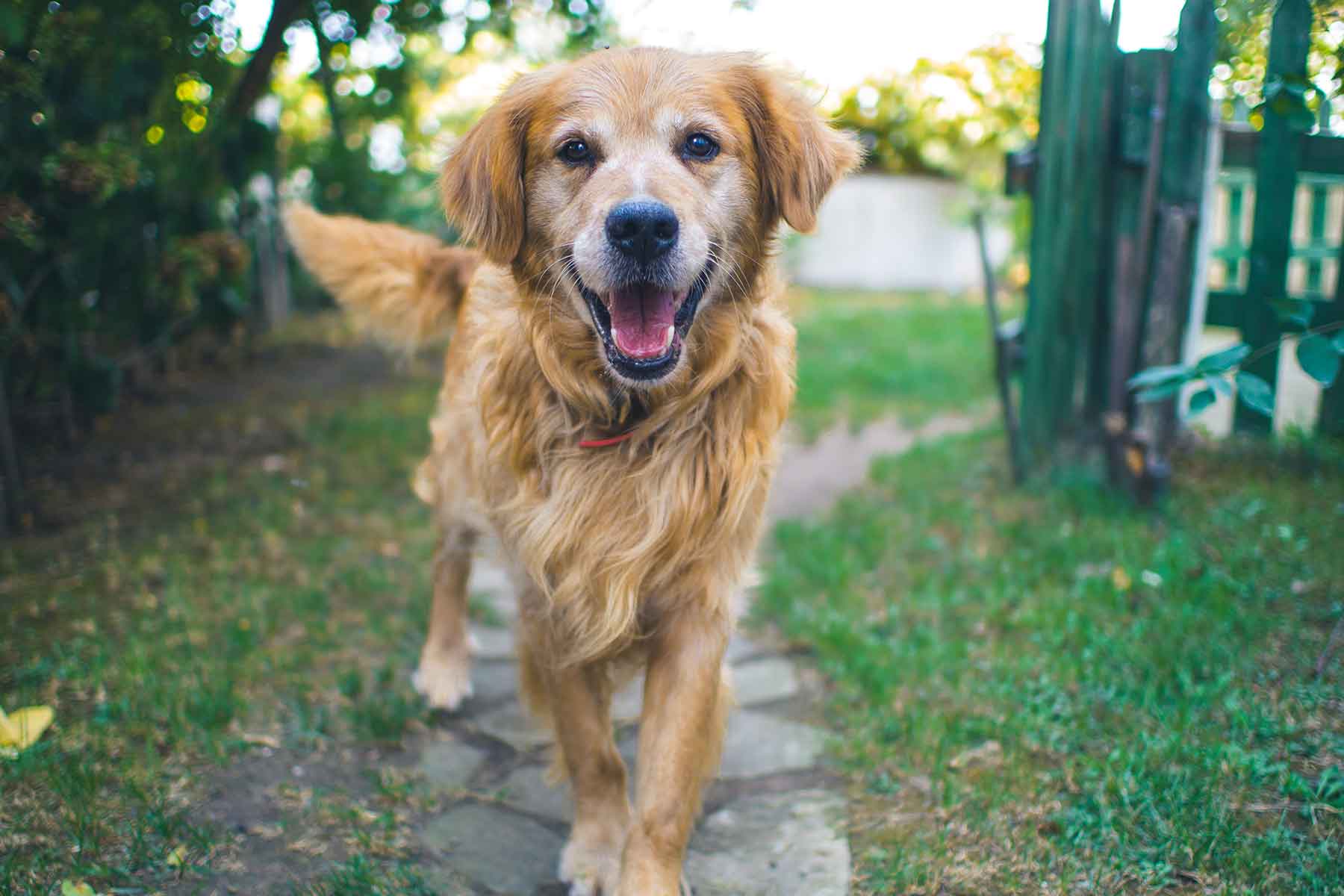Old age arthritis (or osteoarthritis) is very common in both humans and dogs, and can be regarded as the same disease. It is usually a result of the ongoing wear and tear and instability in the joints, although other factors such as injury, genetic makeup, infection, immune disease and cancer can also affect the progression.
Arthritis can affect one or more joints anywhere in the body; however the most common joints affected in dogs are the hips, knees, shoulders and elbows. Most of these joints depend on a layer of cartilage acting as a cushion which also provides a smooth surface so the adjoining bones can move freely over each other. This movement is assisted by the lubrication provided by synovial fluid in joints.
With arthritis the cartilage deteriorates and the synovial fluid loses its lubricating properties so that movement of the bones becomes less smooth, leading to discomfort and reduced mobility. Compare the purple areas in the 2 diagrams below.

A normal hip joint without arthritis - Cartilage lining and joint space shown by the purple area

Advanced arthritis - Showing no cartilage lining or joint space between the bones
Signs of arthritis
There are many signs that may indicate your dog is suffering from arthritis, even though most dogs are very stoic creatures and tend to mask signs of pain. Signs may include one or more of the following:
- Reluctance to walk, climb stairs, jump or play
- Limping/lameness
- Lagging behind on walks
- Pain or stiffness when getting up or down
- Yelping when touched
- A change in personality (aggression when normally good-natured)
- Licking of the affected joints
These signs become more obvious as arthritis progresses, and the pain worsens. As a result of the changes that have occurred in the affected joint/s, arthritis in dogs is not a condition that can be cured. However, the pain and discomfort can be effectively controlled and managed.
Managing arthritis in dogs
The first step in managing arthritis is to schedule an appointment with your veterinarian for a thorough clinical examination. In order to accurately diagnose your dog’s condition, a general anaesthetic and radiographs will usually be required to determine exactly what is happening in your dog’s joints. A multi targeted plan can then be put together for his/ her individual situation.
To help your dog be happy and enjoy life again, there are 4 important areas that we will focus on:
1. Weight management
This is the most important aspect of managing any animal with arthritis. Overweight animals will place proportionally more weight on their joints and therefore cause more localised inflammation and irritation to the joints- which in turn can hasten the progression of arthritis. Please ask us about our free weight loss clinic
2. Exercise management
Exercise is a very important part of managing arthritis. Regular controlled exercise (leash walking, swimming) is extremely beneficial for keeping the joints mobile and the muscles working well. Uncontrolled exercise (chasing after tennis balls, racing up and down sand dunes) can place undue pressure on ligaments and result in permanent damage to the joints – unfortunately the tennis ball may have to be retired.
3. Home comforts/ environment changes
In mild cases, some simple steps taken at home will help to reduce their level of pain and discomfort. Ensure that your pet has a warm, comfortable place to sleep that is away from drafts. Plenty of bedding will help protect any sore joints (a trampoline bed with extra padding is ideal). Provide a ramp in the garden, as an alternative to stairs and provide assistance when getting in and out of cars.
4. Veterinary treatments
Various veterinary treatments are available to manage osteoarthritis in pets. The best option will depend on a number of different factors involving your dog: such as age, severity of signs, progression of the disease process and whether they have any other health problems. Importantly all arthritis patients should be accurately diagnosed before starting a treatment plan.
The different treatments that can be offered include:
- Disease modifying osteoarthritis drugs (Pentosan polysulfate): These medications are given as a series of injections: one injection a week for four weeks and the course of 4 injections usually needs to be repeated every 6-12 months. They act to stabilise joint membranes, help joint cartilage repair and improve joint lubrication. They provide significant improvement in a high percentage of arthritis patients with minimal (if any) side effects.
- Non steroidal anti-inflammatory drugs (NSAID’s): These medications are specifically formulated for use in dogs and should only be prescribed by your veterinarian. They work by reducing the inflammation around the joints and by providing significant pain relief. With regular check ups with your veterinarian to monitor your dog’s liver and kidney function, assess the most appropriate NSAID and dose rate to administer, most patients respond very well to their use.
- Nutraceuticals/ Prescription diets: Eg: Glyde, Royal Canin Mobility diet, Hills J/D. These are dietary supplements or prescriptions diets that contain ingredients such as Glucosamine, Chondroitin sulphate, Fish Oils and/ or Green Lipped mussel. These agents work together to aid the protection of joints and can be given on a long term basis to help reduce inflammation over time.
- Surgery: There are a number of surgical procedures available for pets with, or who will be predisposed to osteoarthritis including total hip replacements. The surgical options depend on the patient, and the nature of the joint disease present so will not be discussed here.
- Physical therapy: Physical therapy involves specific activities designed to improve strength and mobility without causing additional stress on a joint. It is also a useful adjunct to helping a pet lose weight and assisting rehabilitation following joint surgery. Please note: It is not the same as going to the beach and walking on sand/ running in and out of the surf. There are a number of potential benefits of physical therapy in arthritic pets:
-
- Management after orthopaedic surgery: While rest is important after surgery, the recognition of the importance of early mobilisation and rapid return to weight bearing has revolutionised the post operative management of animals undergoing surgery. Evidence is mounting that the consumption of NSAIDs and opioids (such as morphine) decreases when a well constructed physical therapy program is instituted.
-
- Maintenance / restoration of range of movement by active and passive stretching, specific exercises, and trigger point therapy to release muscles. When performing stretching exercises it is important to gently manoeuvre the limb through a range of motion that is well tolerated.
-
- Strengthening exercises to provide resistance so that muscles work a little harder. Eg Leash walking in calm water at waist height. This can be done at the beach if the conditions are right or by using a hydrotherapy treadmill.
-
- Pain relief through heat / cold, acupuncture, massage, TENS.
-
- Stimulation of proprioception through specific balancing exercises.
If you feel that your dog may have any of the symptoms mentioned above or are concerned that your dog may be suffering from arthritis, please speak to one of our healthcare team.











